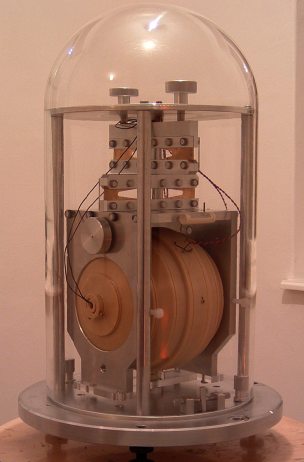The magnetic Inclination and Declination Monitoring System

dIdD is a vector magnetometer, offering a completely integrated design, for continuous monitoring of the inclination and declination, as well as total intensity of the Earth's magnetic field.
It employs a mutually orthogonal coil system which, through a simple measurement methodology, offers superior stability to fluxgate magnetometer systems used for similar applications.
dIdD is unique in that the magnetic field components are determined by a sequence of measuring one unbiased and four biased values of total magnetic fields with an integral Overhauser magnetometer based on the popular GSM-19 model, or the more economical Observatory GSM-90 model.
The dIdD instrument was jointly developed by E tv s Lor nd Geophysical Institute, Budapest, Hungary, U.S. Geological Survey, Golden, CO, USA and GEM Systems, Richmond Hill, ON, Canada.
Parts of the dIdD system:
- integrated 2 bias coils and Overhauser (proton precession) magnetometer sensor
- bias control and signal processing console
- 12 VDC power supply
- PC software for magnetic field components computation, graphic presentation and storage
Features
- ease of use - the entire system is controlled by a customized version of the popular GSM-19/GSM-90 interactive menu system supplied complete with powerful dIdD real-time data acquisition/display software for Windows 98/NT
- GPS time synchronization option - using an integrated OEM GPS card, installed in the dIdD console, GSM-19 and GSM-90 versions.
- remote control operation / interrogation from a computer terminal using RS-232
- real-time data transmission capability via RS-232 and modem to satellite and standard telephone links
Theory of Operation
The axes of the coil system are arranged
so that the mutually orthogonal coils are
themselves perpendicular to the Earth's
field vector, F, in the geomagnetic
horizontal and vertical meridian planes.
Equal and opposite currents are sequentially
introduced into the "Inclination" (I) coil,
which is perpendicular to F. These
deflection fields lie in the local
geomagnetic meridian planes and the
resultant deflected values of F
(Ip and Im ) as
measured by the Overhauser Magnetometer are
logged. The undeflected value of F is also
logged. Then, equal and opposite currents
are sequentially introduced into the
Declination (D) coil, which is also
perpendicular to F. The D deflection fields
lie in the horizontal plane in the East-West
direction. The resultant deflected values of
F (Dp and Dm ) as
measured by the Overhauser Magnetometer are
also logged.
A simple algorithm is used
to determine the instantaneous angular
differences between the coil axes and the
direction of the Earth vector F. These
angular differences are DI and DD. The X, Y,
& Z components of F may be computed by
adding DI and DD to base line values of
Inclination and Declination for the coil
system determined from an absolute
measurement, giving instantaneous
Inclination and Declination angles of F.
dIdD Advantages
- appropriate upgrade for magnetic observatories as a replacement for traditional vector magnetometer systems like fluxgate systems
- first of its kind, integrated design offers a new degree of portability for magnetic compass calibration applications
- because the mutually orthogonal coil system is not directly utilized for measurement of the earth field, but is used only to deflect it, the
dIdD system offers unsurpassed immunity to temperature changes and aging of coil materials
High Sensitivity Indirect Vector Measurements
Since all measurements of magnetic field are conducted in a truly unique fashion through the use of an Overhauser effect proton precession magnetometer, vector measurements are made indirectly with a high sensitivity, and at a rapid speed. The advanced Overhauser design employs continuous radio frequency polarization and special sensors to maximize the signal-to-noise ratio. Instrument sensitivity (0.02 nT), resolution (0.01 nT), absolute accuracy (0.2 nT), and speed of operation (0.2 sec for each measuring interval) set new performance standards.
Applications
Long term stability and high sensitivity make the dIdD ideal for a wide variety of applications, such as:
- calibration of precise magnetic compasses used to control well attitude during the drilling of the well
- monitoring and forecasting magnetic storm activity
- preparation of navigational charts by updating maps of magnetic declination (angle between magnetic north and the true north)
- base station magnetic monitoring - for observing diurnal magnetic activity and disturbances
| dIdD system: | ||
|---|---|---|
| Range of measurement: | -90 < Io < +90 | |
| -180 < Do < +180 | ||
| Sensor unit dimension: | 380 mm x 615 mm, (Model S1) | |
| Weight: | 10 kg, (Model S1) | |
| Power Consumption: | 1.5 Watts at 12 V | |
| Uncertainty: | ||
| (at 2.5 sec cycle) | ||
| DI: < 2 sec rms | ||
| DD: < 2 sec rms for Io < 45 | ||
| DD: < 4 sec rms for Io < 70 | ||
| Rate of reading: | ||
| (1 minute values computed using uninterrupted measurement and a standard INTERMAGNET filter) | ||
| 1.0 sec per interval for 5.0 sec full cycle | ||
| 0.5 sec per interval for 2.5 sec full cycle | ||
| 0.2 sec per interval for 1.0 sec full cycle | ||
| Magnetometer: | ||
| Resolution: | 0.01 nT | |
| Relative Sensitivity: | 0.02 nT | |
| Absolute Accuracy: | 0.2 nT | |
| Range: | 20,000 to 120,000 nT | |
| Gradient Tolerance: | Over 10,000 nT | |
| Remote Control: | remote control using RS-232 interface | |
